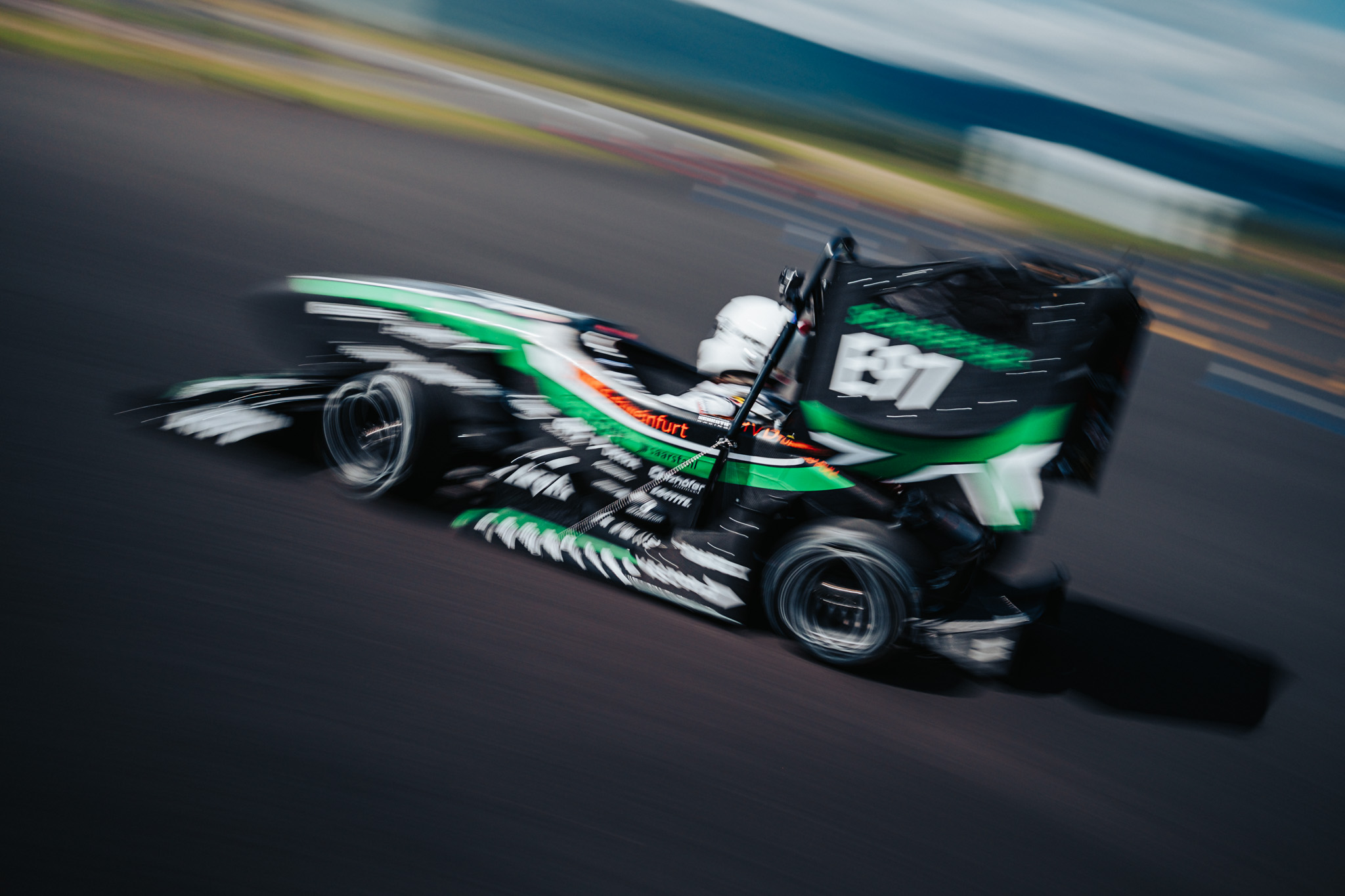Formula Student (FS) is an international engineering competition in which university students design, build, and race a small formula-style vehicle. Originally founded in 1981 as Formula SAE in the USA, the concept expanded to Europe in 1998 and has since grown into a globally recognized platform with over 800 participating teams.
Teams are evaluated not only on their vehicle’s performance on track but also on their technical design, cost effectiveness, and business strategy.
Competition Category
There are three categories in Formula Student:
- Combustion Vehicle (CV) – powered by an internal combustion engine or hybrid powertrain
- Electric Vehicle (EV) – powered solely by electric motors and batteries
- Driverless Vehicle (DV) – vehicles equipped with autonomous driving capabilities (optional addition to CV or EV)
DV teams can participate in dedicated disciplines with adjusted scoring.
Disciplines
Formula Student competitions held in Europe mostly follow a model set by Formula Student Germany. Teams compete in 3 static and possibly up to 8 dynamic disciplines. According to specific European competitions, teams have the option to participate in the integrated or stand-alone category with autonomous functions. Formula Student Czech has an Optional DV cup, which means that autonomous functions are fully voluntary.
| Discipline | EV & CV | Optional DV Cup (ODVC) | |
|---|---|---|---|
| Statics | Business Plan | 75 points | — |
| Cost and Manufacturing | 100 points | — | |
| Engineering Design | 150 points | 300 points | |
| Dynamics | Acceleration | 75 points | 100 points |
| Skid Pad | 75 points | 125 points | |
| Autocross | 100 points | 175 points | |
| Endurance | 325 points | — | |
| Trackdrive | — | 300 points | |
| Efficiency | 100 points | — | |
| Overall | 1000 points | 1000 points |
Static disciplines
The word “Formula” is mainly connected to pure racing. The Formula Student competition, however, is designed to help the students gain a wide professional overlap by challenging them to develop their presentation skills or to think about how to scale their design.
Teams present the technical details of their car, justifying engineering decisions based on performance, reliability, and manufacturability.
Participants must document a complete cost breakdown of the vehicle and demonstrate understanding of manufacturing processes using a Bill of Materials (BoM).
Teams must pitch a viable business case for a hypothetical product based on their prototype, demonstrating market analysis, financial strategy, and return on investment.
Dynamic manual disciplines
From the very first day of each competition, the teams rush to prepare everything to pass the technical inspection which allows them to race the car on the track in several disciplines. The Acceleration, Skid Pad, and Autocross disciplines are open for two drivers from each car, each driver has two attempts. From all four the best attempt will be scored. Knocking or moving a cone means a penalty, and an off-course means an even higher penalty or DNF.
The single most frequent question a team member will get is: How fast does it go and how quickly does it accelerate? Well, this discipline is about to find out. To simplify the setup a time is measured on a 75-meter-long track with a fixed start. Obviously, you put in the smallest driver you have and go with full throttle. The best teams can make it under 3 seconds while reaching over 120kmph at the exit.
The next thing to test is the maximal lateral acceleration the car is capable of. The track of Skid Pad is a figure of 8 with a start and exit in the middle. The car goes two laps right and two laps left, in each case, the second lap is measured. A fast lap time is a combination of good tires, a low center of mass, an effective aero-packet, and a concentrated driver.
This is a proper track the car has been designed for. It is one kilometer long series of straights, curves, slaloms, and chicanes. The car needs to be agile yet precise at the same time. Every single aspect of the design now saves or adds valuable milliseconds. The quality of the driver makes a huge impact too, however. Autonomous cars have the track shortened to 500 meters. The resulting ranking of Autocross is used to define the starting positions for the Endurance event.
If your car still hasn’t fallen apart, there is an ultimate discipline waiting to test its reliability. The track is mostly based on the autocross track, but this time the cars go many laps to reach a total distance of 22 kilometers. There is only one attempt for each team and the drivers change after 11 kilometers.
More Than a Race
Formula Student is more than a motorsport event — it’s a platform for future engineers, project managers, and entrepreneurs. Students gain hands-on experience in systems engineering, teamwork, and communication, while building networks across academia and industry.

